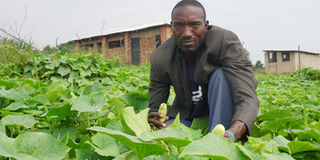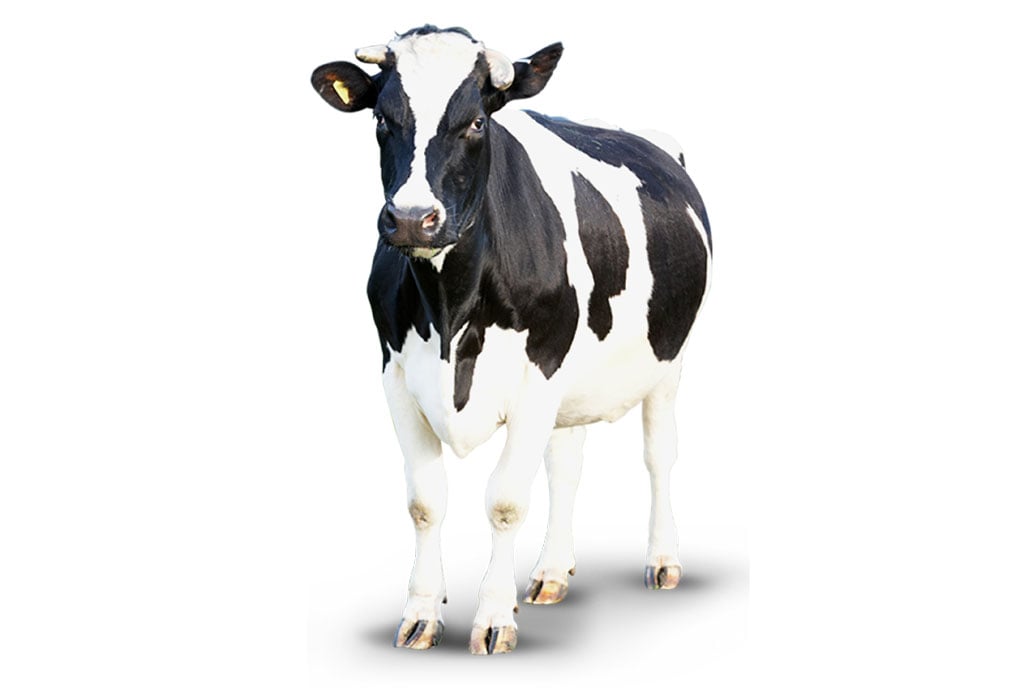Ssewadi earns a living from growing cucumber

Jeremy Musila, a horticulture farmer, tends for his french beans. Courtesy PHOTO.
What you need to know:
With their benefits and fairly good demand on the market, cucumbers should make a good item on your list the next time you decided to grow vegetables, writes Phionah Nassanga.
Francis Ssewadi, 30, found employment in horticulture farming. Owning three acres of cucumber today, Ssewadi started growing the fruit in 2010. An idea he borrowed from a friend who was exporting vegetables and fruits to South Sudan.
“After my Senior Six, I had no hopes of continuing with school. Trying to seek for jobs, I was advised by a friend to devote my time in cucumber growing. The idea seemed odd then, but he said the fruit was on high demand, especially in the neighbouring countries. Using the family land in Naddangira, Wakiso District I gave it a try,” he recalls. Starting with half an acre of land, Ssewadi tried his luck. However, this did not come easily as he had to seek guidance on how to grow the fruit and what it required.
Starting
Visiting his friend’s garden in Gayaza, Ssewadi realised cucumber farming did not require any special farming skills other than guidelines for better yields. “I started with about five packets of seedlings,” Ssewadi recalls. From each of the five packets he bought, he was expected to get 20 plants at harvest with each of the plants producing about five to seven fruits.
Growing tips
Ssewadi notes that cucumber requires warm soil to grow because over moist soils are most likely to cause belly rotting. He says once a farmer follows good farming practices then cucumber can yield theirsatisfaction. “At the time of sowing, plant spacing is key, because poor spacing can affect the yields. The appropriate spaces is about eight to 12 inches between each plant,” he explains. Mentioning that, appropriate spacing enables pollination of the flowers which in turn bear fruits. Once the flowers are not pollinated then the farmer should not expect anything fruits.
Ssewadi says much as one plant is expected to produce about five to seven fruits, at times the number of fruits each plant produces depends on the care given to plants. The fact that cucumber is a climbing plant, using trellis for plants to climb is advisable. “Trellis help to keep the fruits off the ground away from insects such as termites. These also keep the fruits clean and make harvesting easier.”
Pests and diseases
Like any other plant, cucumbers are attacked by pests such as cucumber beetles, aphids, spider mites and fungus.
However, Ssewadi says cucumber beetles cause more damage, particularly to the seedlings thus carrying wilt disease from one plant to plant. Powdering mildew disease affects cucumber leaves the most. Infected plants have white powdery spots on the upper surfaces of leaves, stems and fruits. When not attended to, he says the infected leaves turn yellow and may drop off. “Farmers without trellis for their plants to climb on are most likely to suffer cucumber belly rot especially in times of heavy rains. Once the fruit is in contact with the soil, there are higher chances of it turning yellow or brown thus rotting away.
Pest control
After a week of sowing, Ssewadi says a farmer is expected to start spraying with dudu cipher till flowering time. He says, the more flowers produced the more the fruits and in case of any disfigured fruits Ssewadi says remove the fruit from the plants because it is a sign of incomplete pollination.
Harvesting
Ssewadi says cucumbers are best harvested before they grow too large because when they grow too large, they get seedy. Something many consumers may not like especially hotel owners buying them for salads.
To harvest cucumbers, make sure to just cut the fruit off the vine because trying to pull them off might destroy the entire plant. “Proper harvesting helps increase plant yields. When you pick cucumbers every other day, this helps the plants to continue producing fruits over a longer harvesting period,” he reveals.
Market
Cucumber can be grown throughout the year as long as you can maintain the soil fertility and moderate moisture.
Cucumber has a ready market in the neighbouring countries such as Kenya and Rwanda. It also has a high demand on the local markets of Nakasero, Owino, Nakawa, and Kibuye. “Some hotel owners prefer buying directly from farmers and in big quantities. However, this means your produce must be of good quality,” he says. Costs range from Shs150,000 for a sack, but when the market is flooded expect to sell a sack at Shs20,000.




